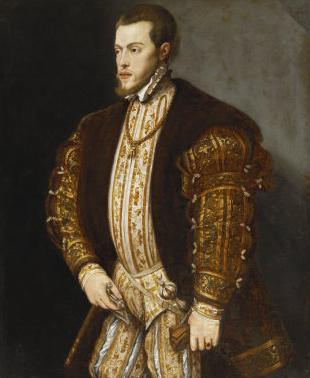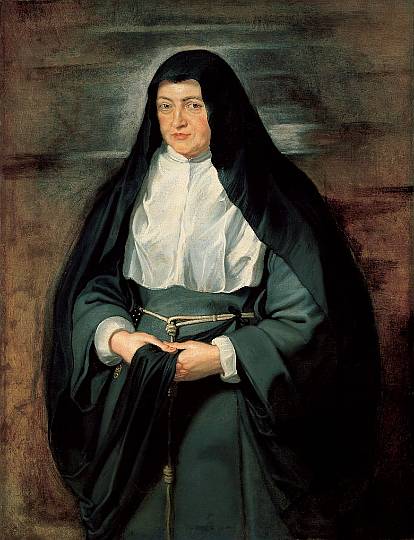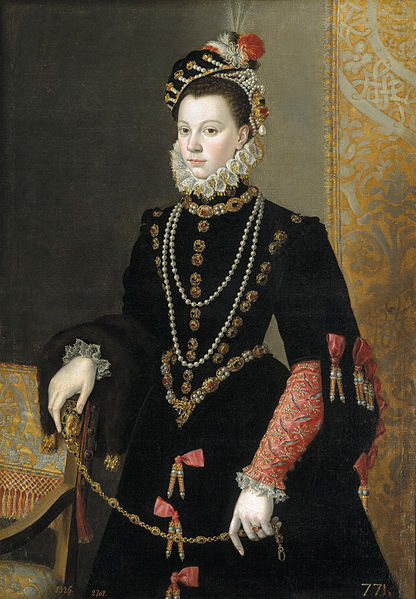- Joined
- Aug 13, 2004
- Messages
- 27,078
- City
- São Paulo
- Country
- Brazil
Philip III/II King of Spain, of Portugal and the Algarves etc. (Valladolid, 21 May 1527 - El Escorial, Madrid, 13 September 1598); married 1stly in Salamanca on 15 October 1543 Princess Maria of Portugal (Coimbra, 15 October 1527 - Valladolid, 12 August 1545); married 2ndly in Winchester on 25 July 1554 Queen Mary I of England (Greenwich, 8 February 1515/1516 - St.James Palace, Westminster 17 November 1558); married 3rdly in Paris 22 June 1559 Princess Elisabeth of France (Fontainebleau, April 13 1545 - Madrid, 3 October 1568); married 4thly in Prague/Segovia 4 May 1570 Archduchess Anna Marie of Austria (Cigales, 2 November 1549 - Badajoz, 26 October 1580)
Reign: 1556 - 1598
Predecessor in Spain: King Carlos I of Spain, Karl V of Austria, Holy Roman Emperor, Duke of Burgondy etc.
Predecessor in Portugal: King Henrique of Portugal and the Algarves
Succeeded by: King Philip III/II of Spain, Portugal and the Algarves
Children Philip II/I and Maria: Prince Carlos of Spain
Children Philip II/I and Mary I: None
Children Philip II/I and Elisabeth: Archduchess Isabella of Austria, governor of the Spanish Netherlands, Duchess Catalina Micaela of Savoy
Children Philip II/I and Anna Marie: Prince Fernando, Prince Carlos Lorenzo, Prince Diego, King Philip III and Princess Maria of Spain
Parents King Philip II/I: King Carlos I of Spain, Holy Roman Emperor Charles V, Archduke of Austria etc. and Princess Isabel of Portugal
Parents Queen Maria: King João III of Portugal and Archduchess & Princess Catherine of Austria and Castille
Parents Queen Mary I: King Henry VIII of England and Princess Catherine of Aragon
Parents Queen Elisabeth: King Henry II of France and Princess Catherina de Medici
Parents Queen Anna Marie: Emperor Maximilian II, Holy Roman Emperor and Princess Maria of Spain
Siblings King Philip II/I: Empress Maria of the Holy Roman Empire and Crown Princess Juana of Portugal
Siblings Queen Maria: Prince João of Portugal and 7 others that died in childhood
Siblings Queen Mary I: King Edward VI and Queen Elizabeth of England
Siblings Queen Elisabeth: King Francois I of France, Duchess Claude of Lorraine, Prince Louis, King Charles IX and King Henry III of France, Queen Marguerite of Navarre, Prince Hercule Francois, Princess Jeanne and Princess Victoria of France
Siblings Queen Anna Marie: Archduke Ferdinand of Austria, Emperor Rudolf II, Holy Roman Emperor, Archduke Ernst of Austria, Queen Elisabeth of France, Archduchess Maria of Austria, Emperor Matthias, Holy Roman Emperor, Archduke Maximilian III of Austria, regent of Austria; Archduke Albert of Austria, Governor of the Low Countries; Archduke Wenzel, Archduke Friedrich, Archduchess Maria, Archduke Karl, Archduchess Margaret and Archduchess Eleonore of Austria
Reign: 1556 - 1598
Predecessor in Spain: King Carlos I of Spain, Karl V of Austria, Holy Roman Emperor, Duke of Burgondy etc.
Predecessor in Portugal: King Henrique of Portugal and the Algarves
Succeeded by: King Philip III/II of Spain, Portugal and the Algarves
Children Philip II/I and Maria: Prince Carlos of Spain
Children Philip II/I and Mary I: None
Children Philip II/I and Elisabeth: Archduchess Isabella of Austria, governor of the Spanish Netherlands, Duchess Catalina Micaela of Savoy
Children Philip II/I and Anna Marie: Prince Fernando, Prince Carlos Lorenzo, Prince Diego, King Philip III and Princess Maria of Spain
Parents King Philip II/I: King Carlos I of Spain, Holy Roman Emperor Charles V, Archduke of Austria etc. and Princess Isabel of Portugal
Parents Queen Maria: King João III of Portugal and Archduchess & Princess Catherine of Austria and Castille
Parents Queen Mary I: King Henry VIII of England and Princess Catherine of Aragon
Parents Queen Elisabeth: King Henry II of France and Princess Catherina de Medici
Parents Queen Anna Marie: Emperor Maximilian II, Holy Roman Emperor and Princess Maria of Spain
Siblings King Philip II/I: Empress Maria of the Holy Roman Empire and Crown Princess Juana of Portugal
Siblings Queen Maria: Prince João of Portugal and 7 others that died in childhood
Siblings Queen Mary I: King Edward VI and Queen Elizabeth of England
Siblings Queen Elisabeth: King Francois I of France, Duchess Claude of Lorraine, Prince Louis, King Charles IX and King Henry III of France, Queen Marguerite of Navarre, Prince Hercule Francois, Princess Jeanne and Princess Victoria of France
Siblings Queen Anna Marie: Archduke Ferdinand of Austria, Emperor Rudolf II, Holy Roman Emperor, Archduke Ernst of Austria, Queen Elisabeth of France, Archduchess Maria of Austria, Emperor Matthias, Holy Roman Emperor, Archduke Maximilian III of Austria, regent of Austria; Archduke Albert of Austria, Governor of the Low Countries; Archduke Wenzel, Archduke Friedrich, Archduchess Maria, Archduke Karl, Archduchess Margaret and Archduchess Eleonore of Austria
Last edited:





